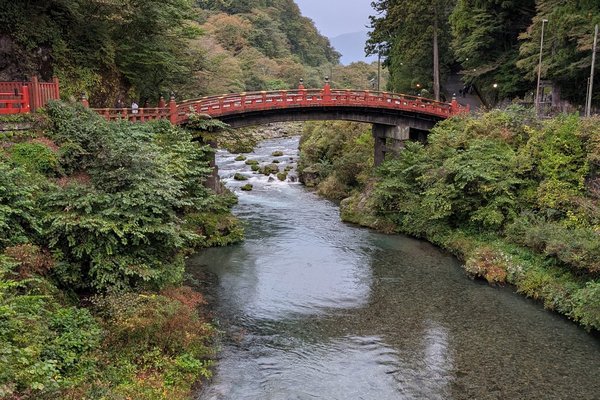Japan
Nikko
The Shrines and Temples of Nikko are a traditional Japanese religious centre with Shinto shrines and Buddhist temples harmoniously integrated in their natural surroundings.
The richly decorated buildings originate from the 17th century and form a perfect illustration of the Edo style of architecture. They lie in the forest and on mountain slopes, both of which hold sacred meaning in the Shinto belief.
Community Perspective: An easy day trip from Tokyo, but count on spending the whole day here as it is a highlight of Japan for most. Hubert has well described a selection of the shrines you'll see.
Site Info
Official Information
- Full Name
- Shrines and Temples of Nikko (ID: 913)
- Country
- Japan
- Status
-
Inscribed 1999
Site history
History of Nikko
- 1999: Inscribed
- Inscribed
- Type
- Cultural
- Criteria
- i
- iv
- vi
Links
- UNESCO
- whc.unesco.org
- Official
-
- nikko-travel.jp — Nikko Tourist Association
All Links
UNESCO.org
- whc.unesco.org — whc.unesco.org/
Official Website
- nikko-travel.jp — Nikko Tourist Association
News Article
- June 16, 2016 en.rocketnews24.com — “Sleeping Cat” and “Three Wise Monkeys” at Nikko’s Tōshō-gū shrine removed for restoration work
Community Information
- Community Category
- Religious structure: Indigenous
Travel Information
Tokyo Hotspot
Recent Connections
-
Perfect Inscriptions
1999 -
Cultural landscape not recognized
The AB ev states Nikko comprises "a gro… -
Incorrect UNESCO 'Number of locations'
The official map shows a tiny exclave: …
Connections of Nikko
- Individual People
-
-
Isabella Bird
Visited Japan in 1878 and published her travels in "Unbeaten Tracks in Japan. An account of Travels in the interior including visits to the Aborigenes of Yez and the Shrine of Nikko". The visit to Nikko commences in Letter VI (see link) -
Gertrude Bell
Photo taken May / June 1903 -
Elias Burton Holmes
See www.youtube.com
-
- Architecture
-
-
Wooden architecture
-
Geomancy
Nikko was chosen by Tokugawa himself as a final resting place. It wasn't that he had any particular liking for the place but in the Chinese tradition of feng shui, Nikko served as the perfect place for Tokugawa's spirit to act as a guardian spirit over the city of Edo and the Tokugawa Shogunate -
Gold Surfaces
Toshogu Shrine -
Japanese garden
Garden of Rinnoji Temple, Shōyō-en Garden
-
- World Heritage Process
-
-
Perfect Inscriptions
1999 -
Incorrect UNESCO 'Number of locations'
The official map shows a tiny exclave: Kodamado - Hall of the Small Pearl, which is not listed as a separate location to the main one. -
Cultural landscape not recognized
The AB ev states Nikko comprises "a group of buildings in a natural setting laid out by man to form a site, with the value of a cultural and associative landscape, as described in paragraph 39 of the Operational Guidelines", but it is not listed as a CL on the UNESCO website
-
- Religion and Belief
-
-
Pagoda
five story pagoda at Toshogu Shrine entrance -
Religious Relics
Okusha Hoto enshrines the remains of Tokugawa Ieyasu -
Sacred Mountains
-
Shinto
Toshogu, Futarasan, and saikyo bridge
-
- Human Activity
-
-
Gilded Lacquer or Urushi
Toshogu Shrine and Taiyuinbyo shrine are well known for black and gold lacquer wall.
-
- Constructions
-
-
Notable Bridges
Sacred Shinkyo or Shogun's Bridge (1638), the oldest known cantilever.See www.artelino.com
-
Horse Stables
Nikko's sacred stable at Toshogu Shrine -
Mausolea
Toshogu Shrine - Mausoleum of Tokugawa Iayasu, First Shogun of Edo period -
Freestanding Bell Tower
Toshogu's Belfry -
Famous Bells
Korean Bell in Nikko A large bell hangs in a pavilion near a pagoda in Toshogu Shrine, the final resting place of Ieyasu Tokugawa, the first of the Tokugawa Shoguns. The bell was a gift from the Joseon Dynasty of Korea.
-
- WHS on Other Lists
-
-
Cultural WHS set within an IUCN recognised protected area
Nikko National Park, IUCN category II (National Park)
-
- Timeline
-
-
Built in the 17th century
The temples were rehabilitated at the beginning of the 17th century (AB ev), original cult originated in the 8th century
-
- WHS Hotspots
-
-
Tokyo Hotspot
2h45 by train
-
News
- en.rocketnews24.com 06/16/2016
- “Sleeping Cat” and “Three Wise Mon…
Recent Visitors
Visitors of Nikko
- 4lex
- AC
- Adam Hancock
- Afshin Iranpour
- aj
- Albert
- Alexander Barabanov
- Alexander Lehmann
- Alexander Parsons
- Alex Baranda
- Alex Goh
- Alex Marcean
- alicemears
- Ammon Watkins
- Anna Wludarska
- Artur Anuszewski
- Aspasia
- Atila Ege
- Badwater
- Bamse
- Bauchat
- BaziFettehenne
- BenReeve
- Bill Koo
- Bill Maurmann
- Boj
- campmany
- Carlo Sarion
- Casey
- Caspar
- CeeMon
- Celina Nanbara
- Chantal den Haan
- chenboada
- chenqtao
- Cheryl
- chiuliqi
- Chole Ross
- Christoph
- Christravelblog
- Cluckily
- Clyde
- Colossus
- Corinne Vail
- ctravel
- CugelVance
- cutecid
- cwthong
- Cyberczar
- CynthiaW
- czesioszpachelka
- Dani Cyr
- Daniel Chazad
- Deffra
- Dimitar Krastev
- DL
- DouglasR
- Elaine McArdle
- Elisabeth Fransisca Situmorang
- eljx1988
- Els Slots
- Erik Jelinek
- Errol Neo
- Eva Kisgyorgy
- Fan Yibo
- Filippo Ubaldi
- flahr
- Folkokovic
- Frédéric M
- Frederik Dawson
- Gary Arndt
- GeorgeIng61
- GerhardM
- Harald T.
- henrik_hannfors
- henryjiao18
- Hubert
- Iain Jackson
- Jasam
- Jason Boulette
- Jay T
- Jeanne OGrady
- Jeffrey Chai
- jess4sythe
- Jgriffindor6
- João Aender
- Joel on the Road
- Jonas Hagung
- Jonas Kremer
- Jon Bauer
- Joyce van Soest
- Kasia M.
- Kasper
- KeithBailey
- Ken DJ
- Kjsisney
- ko9757
- Kurt Lauer
- lichia
- Loic Pedras
- Luboang
- Lucio
- Luis Filipe Gaspar
- Luke LOU
- Malgorzata Kopczynska
- marcel staron
- Matthewsharris
- MaYumin
- M.HATADA
- Mia esguerra
- Michael Novins
- Michael Turtle
- Miguel Marquez
- Mihai Dascalu
- Mikan22
- Mikko Syrjä
- Milan Jirasek
- Miloš Tašković
- MMM
- Monica Tasciotti
- Morodhi
- Nafis N
- Naim Y
- nan
- Niall Sclater
- Nicolas
- Nihal Ege
- NoahFranc
- Pat Martin
- Patrik
- Paul Schofield
- Petteri
- Philipp Leu
- Philipp Peterer
- Pieter Dijkshoorn
- Pincze
- Pink Bunny
- Porcho
- pressdm
- Ralf Regele
- Randi Thomsen
- ReallyDeepThoughts
- Reisedachs
- Reza
- Riccardo Quaranta
- Rick Ohm
- RobRos
- Roger Ourset
- Samato
- Sandra!
- Sergio Arjona
- Shandos Cleaver
- Slavi
- sncjob
- Solivagant
- Ssong.x
- Stanislaw Warwas
- Stijn
- Sutul
- Svein Elias
- Szucs Tamas
- takanenohana
- Tamara Ratz
- Taotao Chen
- Tcchang0825
- Thomas Buechler
- Thorben
- Tonisan
- Tony H.
- triath
- Truls Brekke
- Tsunami
- usagi1974
- Valentina
- Velvetlapis
- Vincent Cheung
- voyager
- Walter
- Waxwing
- Westwards
- Wojciech Fedoruk
- Xiong Wei
- Xiquinho Silva
- Yi Han Goh
- Yongcheng Liu
- zman5455
- Zoë Sheng
- Zos M
Community Reviews
Show full reviews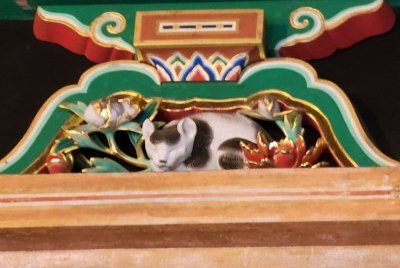
As I had taken a Japanese history class in college and learned all about the Tokugawa shogunate, I had to work visiting Nikko into my travel plans. We took the (super early) express train from Asakusa station and made it to Nikko right when the temples started opening.
The highlight is Toshogu shrine, as it is the grandest and contains the remains of Tokugawa Ieyasu. But it is also chocked with hordes of school tour groups at all times, even if you go early. It is worth braving the crowds however, because the carvings are amazing. The restoration team did a wonderful job. Taiyuin is almost just as grand and much more peaceful than Toshogu. This one contains the remains of Tokugawa Iemitsu. The mountain and forest atmosphere is also in itself peaceful.
These were the most ornate buildings in Japan and they are well worth a visit!
Keep reading 0 comments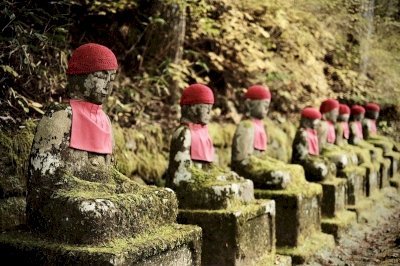
I visited this on a day trip in November 2023.
Easy to access from Tokyo using the JR Pass (just one change), it was well worth the visit.
Nikko has that mystical, Tolkien element to it, coated in moss, and magical on a misty day.
A day was just about enough to see the main shrines, but I wish I'd stayed longer to do some of the walks and see the waterfalls around.
Toshugu Shrine was the most iconic place, especially the walk up to the main shrine, and also the five-storied pagoda at the front.
The most unexpected was the Kanmangafuchi Abyss, with its rows of stone Jiva, in their little red hats.
Definitely up there with one of the best UNESCO sites I've visited.
Keep reading 0 comments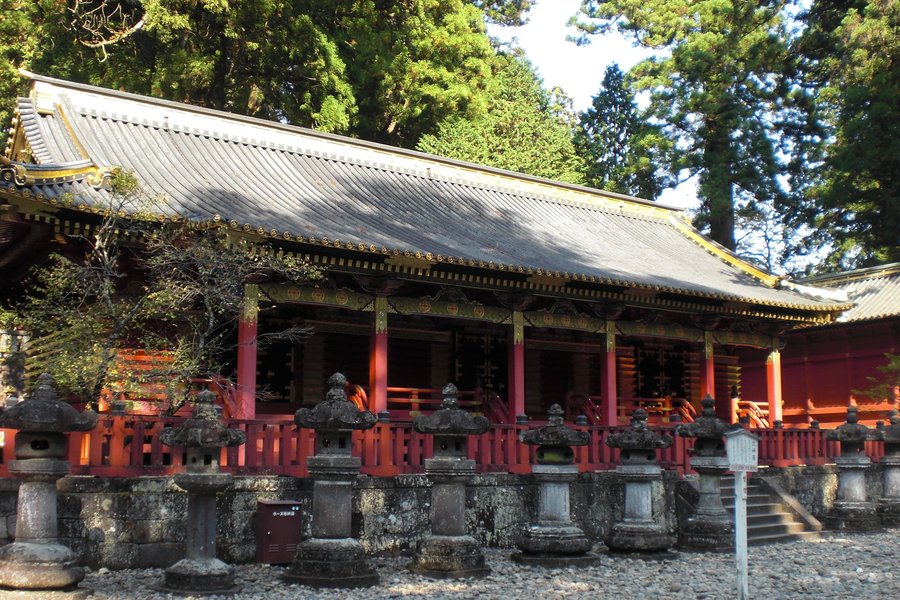
The size and scope of the temples, mausoleums, and other buildings of Nikko is astounding. Each site is hidden behind the others, surrounded by massive cedar trees and climbing up into the mountainside. I was somehow unaware until arriving that this was the final resting site of the founder of the Tokugawa Shogunate, which of course lends massive historical importance to the architectural beauty. It's a lovely day trip from Tokyo, but the town itself is also in a beautiful stretch of country, so it's worth coming out and taking the time to enjoy the scenery as well.
There are generally lots of visitors, both foreign and Japanese, so just be aware of that going in. Bring solid shoes and be prepared for many steps!
Keep reading 0 comments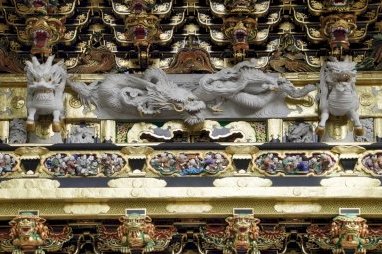
"Don't say beautifully until you've seen Nikkō" is an old Japanese saying. And not without reason. The temples and shrines of Nikkō are famous for their colourful ornaments and the multitude of carvings, best known are the Three Wise Monkeys: see no evil, hear no evil, speak no evil.Nikkō was already a holy place in the 8th century, and became a spiritual centre when the mausoleum of the first Tokugawa Shōgun was moved here in the early 17th century. The temples and shrines represent the architectural style of the Edo period (1603 to 1868).
To enter the shrine complex, you have to cross the Daiya River. There is the beautiful vermilion-painted Shinkyo Bridge, after paying an entrance fee you can walk across the bridge - and back. It is not the entrance to the sacred area, visitors have to take the ordinary car bridge. In this regard, nothing has changed since the Edo period. Ordinary worshippers were never allowed to use the Shinkyo Bridge, it was only for the Shōguns and for ceremonial purposes.Rinno-ji was founded in the 8th century and was the first temple in Nikkō. It is also the first site to be reached after entering the inscribed area. Most impressive are the golden Buddha statues in the main hall. Certainly an important Buddha temple, but for today's visitor, Rinno-ji is just the prelude to the main attraction, the Toshogu Shrine.Unfortunately, the Toshogu Shrine was also one of the most crowded sites I visited on …
Keep reading 0 comments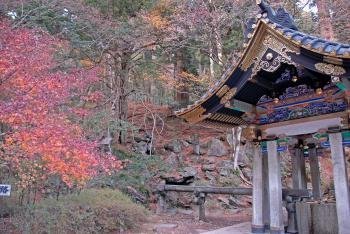
I visited Nikko in the fall of 2007.
Nikko is a small town and the temple area is located in a wooded area about a 30-minute walk from the train station. I managed to visit Nikko on a day trip from Tokyo. About half of the trip is via the fast Shinkansen, and the other half is a much slower local train.
The most famous thing in Nikko is probably the wood carving of the "hear no evil, see no evil, speak no evil" monkies. That trope has its origins here.
I highly recommend visiting Nikkor for anyone with a few days in Tokyo.
Read more about the Shrines and Temples of Nikko on my website.
Keep reading 0 comments
The town itself feels like a ski resort in summer… which it kind of is. But what I mean is that the visitors come for the day to walk in the hills or visit the religious sites but they don’t set up base for longer than eight hours or so. The few hotels near the train station all have vacancies and in the evenings most restaurants are either closed or empty. It’s during the day that there are queues out the doors for the popular lunch joints.
The first shrine was built in 776 and more were built right up until the 16th century when the area was abandoned. It means there’s a mix of architectural styles that show the evolution of Shinto against the backdrop of Buddhism in Japan. The Japanese have a saying that roughly translates to “you haven’t seen beauty until you’ve seen Nikko” and it’s true. These magnificent buildings nestled in the lush green forests are truly stunning
Keep reading 0 comments
Nikko is an enchanting complex of temples, shrines, and gardens idyllically located in mountains north of Tokyo. The site is located within Nikko National Park, which is an easy day trip from Tokyo. I traveled to Nikko in November 2010 and enjoyed great autumn weather during my visit. I was not alone at the park, as many local visitors were also appreciating the pleasant weekend; I even encountered a wedding at one of the shrines. Of the shrines and temples I visited, I was most impressed with Toshu-gu Shrine, which had a brilliant, intricately carved and painted gate, as well as a photogenic five story pagoda. Within the shrine was the famous wood-carving of the Three Wise Monkeys (see no evil, speak no evil, hear no evil). Also of note at Nikko were Futara-san Shrine, which included a copper torii and a sacred bridge, and Rinno-ji Temple, which included a shogun's mausoleum as well as a treasure house and a garden. After the non-stop busy-ness of Tokyo, Nikko was a welcome retreat to nature in Japan.
Logistics: Nikko can be reached by train from Tokyo. A local bus system provides access to the park.
Keep reading 0 comments
I visited this WHS in November 2009. The shrines and temples of Nikko, together with their natural surroundings, have for centuries been a sacred site known for its architectural and decorative masterpieces. They are closely associated with the history of the Tokugawa Shoguns. You could easily spend 3-4 days here to try to cover all the sights there are to see.
Keep reading 0 comments
Nikko is a beautiful area. The World Heritage sites are all within easy walking distance from each other. There is a bus specific for the sites as well. I took the train from Asakusa, Tokyo and used the World Heritage Pass. It covers the roundtrip train ticket on the Tobu line and entrance to the sites. It doesn't however pay for special exhibits within the sites. The buildings were beautiful and very peaceful. Toshogu had construction and renovations going on but the main gate and buildings were visible. I would recommend going as early as possible to the sites. Since Nikko is a very popular destination there are many tour groups as well as school trips there. After around 9:30a.m., the temples and shrines lost a little of their tranquility and became more of a circus. But overall I would go back here again and recommend it to others. There is more to the area than just the World Heritage sites. Nikko is also in a national park with hot springs, waterfalls, hiking, and a large lake. To do both the sites and the park will require a stay overnight as the natural areas are at least an hour away by bus. Also Nikko is famous for yuba (tofu skin) so try some of the great yuba cuisine while you are there.
Keep reading 0 comments
There are a lot of temples in Japan, but the ones at Nikko I liked most. Nikko on its own disproves the common remark that Japan does not have world-class sights.
The Toshogu-shrine is the best example of this. The main gate inside the complex is 11 meters high and painted with animals, flowers, and human figures. Especially the smallest details (which you can only see with binoculars or the zoom lens of your camera) are magnificent. What at first just looks like a coloured border later turns out to be a whole scene.
Keep reading 0 comments

